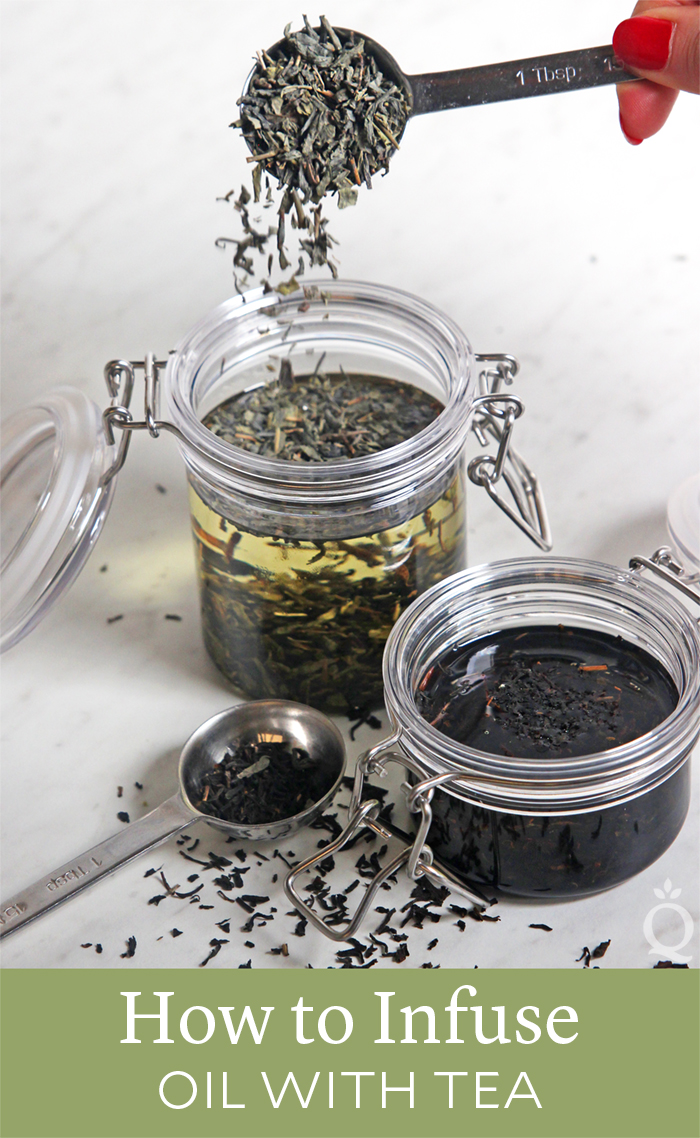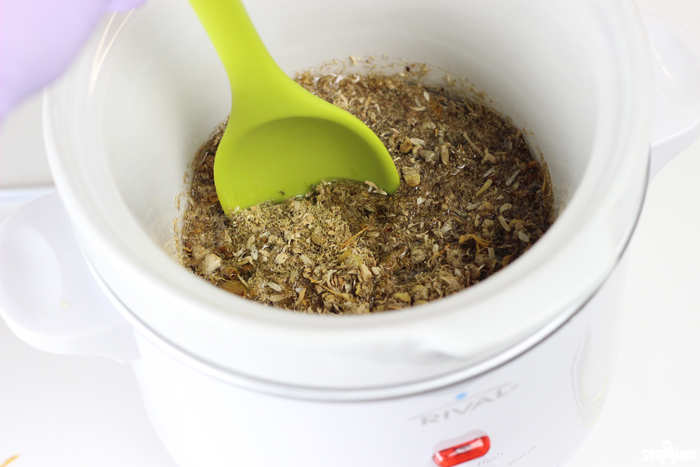
There are many different oil options for bath and beauty products. Each oil has unique properties including texture, smell, color and skin-benefits. Choosing which oil to use in various products is part of what makes formulating skincare recipes so fun.
Infusing oils with herbs is a great way to take your oils from average to amazing. Depending on what you infuse it with, various properties will be given to the oil. For example, in the Chamomile and Coconut Oil Body Balm, coconut oil is infused with dried chamomile herb. Not only does it give the oil a light scent, chamomile is well known for its skin-calming properties.

If you’d like to give your oils extra skin-loving properties, infusing oil with tea (such as black tea leaves and green tea leaves) is a great option. Both teas have been used in skincare for centuries for their antioxidant content. If you take a stroll down the beauty aisle, you’re bound to find several products marketed with tea.
There are several techniques for infusing oil, all of which are extremely easy. More or less, place the tea into the oil and wait. The longer you wait, the stronger your infusion will become. The strength of the infusion also depends on the ratio of tea to oil. In general, we recommend at least two tablespoons of tea for every four ounces of oil. For an extra strong infusion, use one tablespoon tea per ounce of oil.
When infusing oils, you can use a cold oil infusion method, or a hot oil infusion method. The difference between the two is (you guessed it!) temperature. With a cold oil infusion, the herb or tea is added to cool or room temperature oils. With a hot oil infusion, the oil is heated and the herb is added to the hot oils. Sometimes the heat is maintained throughout the infusing process. Check out the How to Infuse Oils with a Crock-Pot post to learn more about hot infusions.

Just like making tea in water, the oil infuses faster when it’s hot. With a hot oil infusion, you can use the oil in as little as two hours. If using the cold oil infusion method, you want to wait at least a week, up to six weeks. If you’re using the cold oil infusion method, a liquid oil is recommended so the oil does not harden while infusing.
Now, let’s get to infusing! For this infusion, we used sweet almond oil and green tea leaves. Place about 8 ounces of oil into your container. Generally, a container with a lid (like a mason jar) works best. Then, place 4 tablespoons of green tea leaves into a large sealable tea bag, or directly into the oils. If placing the tea leaves directly into the oil, you will need to strain them out later. Now…wait and allow the tea to infuse!

The oil shown above was left to infuse green tea leaves for about 2 weeks. It took on a light green color. It will continue to infuse for another two weeks, just to make sure it gets all the skin-loving properties possible. Once the tea leaves are strained from the oil, it’s ready to use! It can be used in soap, lotion, balms and more.
Do the skin-loving properties of tea survive the saponification process? It’s impossible to say for sure. Some may argue that more properties are likely to survive if infused in an oil, rather than adding the lye directly to tea water. It’s something we wish we could test! But, we can say that soap made with tea-infused oil, or a tea/lye mixture feels extra luxurious. Tea-infused products are also great from a marketing standpoint.
Do you infuse oils for your bath and beauty projects?